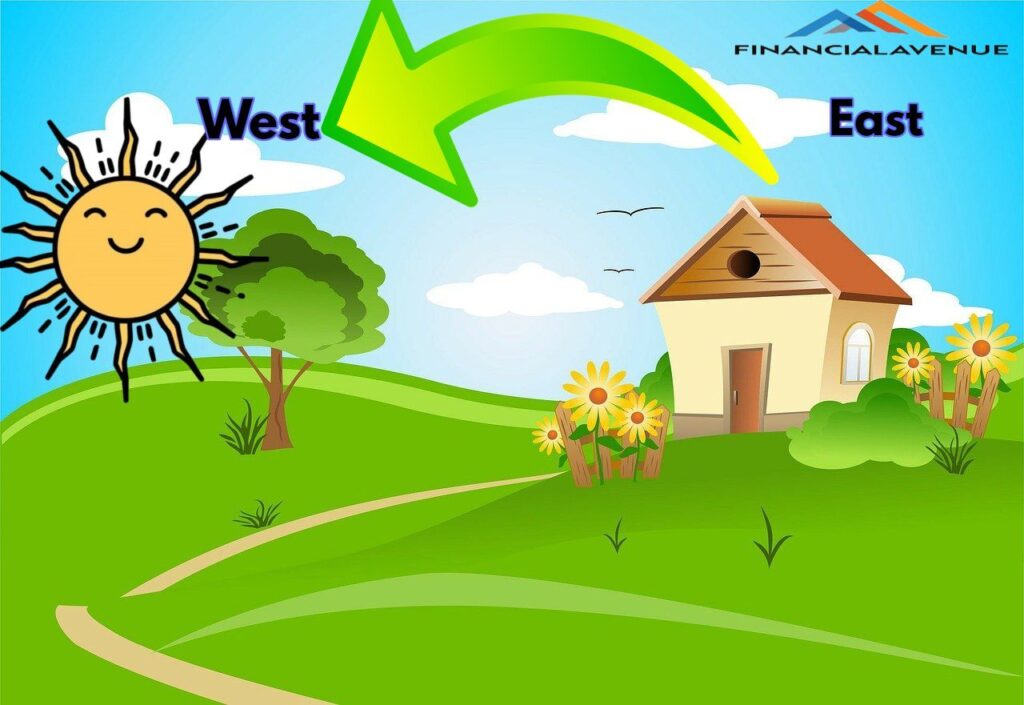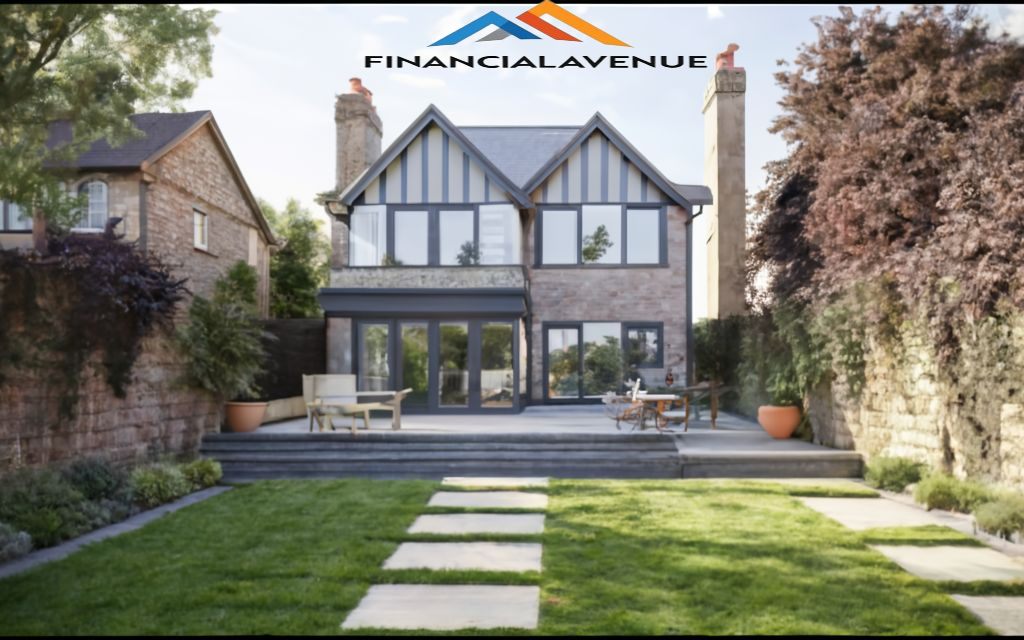So you’ve found your dream home, but the garden unfortunately faces west instead of the preferred southern exposure. While many desire a south-facing outdoor oasis, a west-facing garden can still allow pleasant living space if properly landscaped.
This article uncovers the unique benefits and drawbacks of west facing garden to help you determine if it should impact your home purchase.
Discover how sunlight, temperature, wind, aesthetics and plant growth differ compared to other directions. Let’s weigh up the evidence!
Sunlight Exposure in a West-Facing Garden
Sunlight fuels all plant growth and is the defining feature of any garden. So what light can you expect from a west facing garden?
- West-facing gardens receive strong intense afternoon sunlight and evening light. However, mornings will start cooler and shadier.
- Sun charts show west gardens get over 6 hours of sun in summer afternoons in the UK, and 3-4 hours in winter.
- In comparison, south facing gardens receive sunlight more evenly across the day without the strong intensity spike in late afternoon. North gardens conversely start cool but become warmer, while east gardens get morning priority.

This afternoon and evening priority impacts what thrives in a west facing garden:
- Sun-loving plants like lavender, roses, black-eyed susans and herb gardens appreciate the abundant strong afternoon sunlight to flourish.
- Vegetables like peppers, aubergines, tomatoes, carrots and potatoes also grow well with the western warmth.
- However shade-loving plants like ferns and hostas will likely struggle without the early sunlight. Some vegetables like lettuce and spinach bolt too quickly from the intensity.
So when planning your planting, choose varieties that align with peak afternoon and evening light exposure.
Learn more about the Disadvantages of Buying Freehold Property
Temperature Differences Based on Orientation
The many hours of afternoon sunlight also heat up west-facing gardens significantly. When considering buying a house with a garden, temperature is an important factor.
- In summer, west facing spaces can be up to 20°C warmer than east facing gardens in the UK according to meteorological data. That intensity allows subtropicals to thrive.
- However in hot midsummer weeks, the prolonged heat may make the space uncomfortable for relaxing in without shade. Temperatures cool down in the evening though after sunset.
- In winter, the afternoon warmth is welcomed to extend the growing season. Frost risk is also slightly reduced, protecting plants. But mornings start chillier than other orientations until the light and heat builds.
So west gardens offer high temperatures on average, which suit many plants but can pose overheating challenges in summer. Weigh up if the late-day relaxation appeal offsets this peak heat.
Don’t ignore these Disadvantages of Buying Leasehold Property
Shelter From Wind and Rain
Garden orientation also impacts exposure to winds, storms and extreme weather. In the UK, the prevailing winds sweep in from the South West.
- West facing spaces sit perpendicular to these prevailing winds, allowing more shelter naturally through house walls and boundary fences. Less buffeting allows more delicate plants to grow.
- Rain and storm direction is more variable, but west gardens typically receive less wind driven rain compared to south gardens. They are however exposed to North and North Easterlies.
Table summarising wind and rain exposure by orientation:
| Orientation | Prevailing Wind Exposure | Rain Exposure |
|---|---|---|
| West | Medium shelter | Medium |
| East | Medium exposure | Medium |
| North | High exposure | Low |
| South | High exposure | High |
So the shelter a west facing garden receives allows slightly more protection for your plantings, especially from the dominant South Westerlies.
Read this post to learn more about Second Viewing After Offer: Critical Tips and Your Rights
Aesthetics and Enjoyment Factors
Beyond plant practicalities, a key question is whether a west facing garden matches your lifestyle and aspirations. Consider:
- Do you prioritise morning or evening relaxation time outdoors? West gardens come alive in the afternoon and offer long summer nights to enjoy too.
- Does a sunset view appeal over breakfasting amidst a dawn chorus? West orientated spaces provide backdrops of spectacular sunsets.
- Heat tolerance is also key – are you comfortable out in 25°C+ temperatures without shade? Midday summer relaxation may need a sun shelter.
Envision your perfect relaxation routine and cooking occasions to assess if a west facing garden provides the ideal space and ambience you seek from your home.
Discover Why First-Time Buyers Should Consider New Builds
Comparing Plant Growth Rates by Orientation
Do plants really grow quicker in certain garden orientations? There is moderate evidence that the intense afternoon sunlight accelerates growth rates:
- Herbaceous plants like dahlias and sunflowers can grow over 20% faster in west gardens compared to cooler north-east exposures according to RHS research.
- However weaker root establishment from quick early stem bolting may counteract this for some plants.
- South facing spaces often allow moderately faster growth too with greater total sunlight.
Therefore plant growth pace may be slightly accelerated in a west facing garden, but the intensity could also tip certain species into bolting too quickly. Carefully tailor your planting plan.
The Verdict: Should Orientation Sway Your Decision?
Weighing up the evidence, west facing gardens offer some unique advantages but also pose some additional growing challenges compared to the prime south facing gold standard. Consider:
Pros
Ideal afternoon sunlight
The hours of intense western sun perfectly suit sun-loving plants like herbs, fruit trees, roses, lavender and vegetables like peppers and tomatoes.
Shelter from wind
The perpendicular angle shelters from the dominant South Westerly winds. This protects delicate flowers and allows a wider variety of plants to thrive.
Warmer microclimate
The many hours of strong sunlight heat up west gardens to be up to 20°C warmer than east facing spaces in summer. This expanded warmth extends the growing season.
Dramatic evening light
The low angled golden hour light creates beautiful evenings to relax and entertain in the garden until sunset. Summer nights feel longer.
Cons
Morning shade
With little early light, the garden starts cooler in mornings. Frost risk continues later into spring than other orientations.
Intense midday heat
The prolonged sunlight spikes temperatures in midsummer afternoons. Additional shade structures may be needed for relaxing comfortably.
Bolting risk
Fast stem growth from the unremitting sun causes some plants like lettuces to bolt too quickly before developing strong roots. Careful plant selection is key.
Less total annual sunlight
Although the afternoon and evening light is abundant, west facing gardens receive fewer total sunlight hours over the course of a year than south facing spaces.
However, it is important to stress that other factors like garden size, structures, soil, drainage and layout play a far greater role in creating a thriving plant environment than orientation alone. An exposed south facing slope could be more challenging than a well laid out west garden with great structures.
Final Words
Ultimately garden direction should sway your decision only if a certain sunlight schedule like mornings or evenings matters for your lifestyle. Otherwise focus on the other elements you can control through thoughtful design and planting. A west garden can provide wonderful outdoor living with the right plan tailored to its unique rhythm.
What has been your experience with a west facing garden? Share your wisdom in the comments below!

Daniel, a seasoned professional with over 5 years of experience in banking, property, and finance, brings a wealth of expertise to the table. This authoritative blog is meticulously curated to provide you with the most up-to-date financial insights. Delving into the dynamic realms of banking and mortgages, Daniel’s passion for finances shines through every post.










